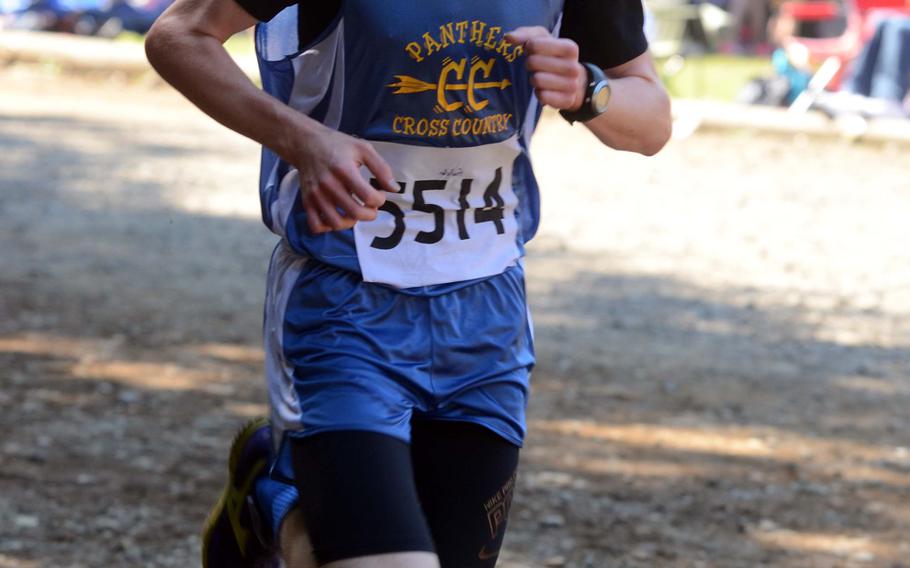
Yokota junior Daniel Galvin won last year's Kanto Plain finals, but missed the event as well as Far East and DODDS Japan finals this year with a stress fracture in his right leg. But he posted the Pacific's fastest times at various distances and earned Stars and Stripes' Pacific boys cross country Athlete of the Year honor. (Dave Ornauer/Stars and Stripes)
He posted the fastest overseas times this season in various cross country distances.
But maybe the most important takeaway Daniel Galvin got this cross country season had nothing to do with a measurement on a stopwatch.
“He learned the importance of taking time off instead of training every day,” said Galvin’s father and coach, Dan Galvin.
Overtraining, runner and coach say, can be the ultimate burden for a runner, especially one who missed three major season-end events with a stress fracture in his lower right shin, as the younger Galvin did.
Galvin has still been named Stars and Stripes Pacific boys cross country Athlete of the Year.
“Don’t try to push through it like I did,” Galvin said of what he’d tell another runner facing his situation.
“And you have to accept the fact that you have a stress fracture. I always told myself that it was just shin splints, when it was clear that it was in fact a stress fracture, which probably prolonged the recovery process.”
Thus, he watched the Nov. 3-4 Far East meet from the finish line as Willem Thorbecke of American School In Japan crossed first, as Galvin had hoped to do. Galvin wasn’t at the DODDS Japan or Kanto finals - events he won last year - either.
“Sometimes, I need to take a day or maybe even a race off, depending on the levels of pain I’m feeling,” Galvin said. “But I also learned I can’t take anything for granted. Running in top-performance shape for long periods is dangerous because it’s such a fine line between peak shape and injury.”
And the season began with such promise for Galvin, who became the fourth of six runners to post a sub-15-minute time at Tama, topping out at 14 minutes, 40.9 seconds. In a meet at Marine Corpa Air Station Iwakuni in September, Galvin ran 16:08 in a 5K run, fastest overseas this season.
But the script changed Oct. 9 at Tama, when the pain became too much and he pulled out of a meet for the first time. Clearly, things will change going forward, Galvin said. His father said a doctor ordered him not to run until the end of November.
For the moment, Galvin is riding the exercise bike up to two hours and swimming for an hour daily.
Yokota’s assistant coach, former two-time Hong Kong Olympian Maggie Chan-Roper, has imparted running workouts on Galvin, in which he’ll engage once he’s cleared to run.
“I’m going to have to start off slow and not put too much pressure on my legs,” he said. “Once I get back into running shape, in which I’m confident I won’t get hurt, I’ll take the focus on my workouts and put a lot more of it into the running.”